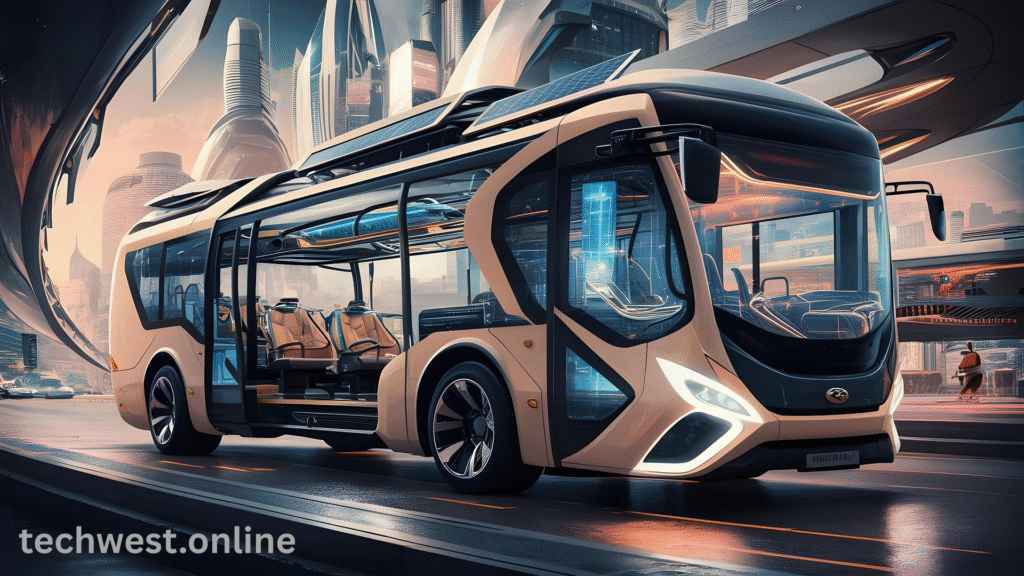Introduction to Auto Technologies
Auto technologies refer to an extensive array of innovations that are changing the world of automobiles, ranging from electric vehicles (EVs) and self-driving vehicle systems to smart driver-assistance systems (ADAS) and connected car solutions. These solutions are destined to improve vehicle performance, safety, sustainability, and user convenience, revolutionizing the way we drive and interact with cars. As the world demands wiser, more sustainable transportation, car technologies are leading a mobility revolution. This post discusses the essential elements, advantages, problems, and prospects of auto technologies, optimized for the term “auto technologies” in order to improve search engine rankings and enlighten the audience on how they are transforming the automotive sector.

What Are Auto Technologies?
Auto technologies are advanced systems and parts that are built into automobiles to enhance efficiency, safety, connectivity, and eco-friendliness. They comprise hardware such as sensors and batteries, autonomous driving software, and V2X connectivity solutions. Industry leaders such as Tesla, Lumax Auto Technologies, and Sensi Auto Technologies are leading the innovation, with applications covering consumer cars to commercial fleets. The sector is driven by trends such as electrification, automation, and digitalization, which make auto technologies a top area of concern for manufacturers and buyers.
The term “auto technologies” is extremely relevant to car enthusiasts, engineers, and companies doing research on innovations in the design and performance of vehicles. Content optimization for this keyword addresses a wide range of people interested in knowing about the future of transport.
Major Auto Technologies Influencing the Sector
1. Electric Vehicle (EV) Technologies
EVs use battery-driven electric motors, lowering dependency on fossil fuels. Advances in lithium-ion batteries, high-speed charging systems, and regenerative braking have narrowed the gap. Manufacturers such as Lumax Auto Technologies are increasing their EV offerings, with an emphasis on interiors and parts.
2. Autonomous Driving Systems
Self-driving features rely on cameras, radar, LIDAR, and AI to make vehicles drive independently. Level 2 and 3 autonomy, in Tesla’s Full Self-Driving (FSD) and Mercedes-Benz’s Drive Pilot, provide partial automation, while Level 5 seeks total autonomy. These systems improve safety by minimizing human error.
3. Advanced Driver-Assistance Systems (ADAS)
ADAS consists of technologies such as adaptive cruise control, lane-keeping assist, and automatic emergency braking. Sensi Auto Technologies provides expertise in ADAS calibration to provide precise sensor performance for vehicle safety. ADAS is a precursor to complete autonomy, enhancing driver convenience and minimizing accidents.
4. Connected Car Technologies
Connected vehicles utilize V2X communication to communicate with other cars, infrastructure, and cloud networks. Driver assistance features such as real-time navigation, over-the-air (OTA) software updates, and remote diagnostics are the drivers for user experience. All these technologies enable smart city projects and fleet management.
5. Sustainable Materials and Manufacturing
Auto technologies also concentrate on green materials, including recycled plastics and light-weight composites, to ensure vehicle lightness and less emission. Lumax Auto Technologies’ purchase of IAC India stakes highlights green EV interiors.
Advantages of Auto Technologies
1. Better Safety
Auto technologies like ADAS and autonomous systems reduce accidents caused by human error. For instance, automatic emergency braking can prevent collisions, saving lives. Infographics on vehicle safety advancements can boost engagement for searches like “auto technologies for safety.”
2. Environmental Sustainability
EVs and hybrid cars reduce greenhouse gas emissions in aid of worldwide climate objectives. Environmentally friendly manufacturing processes, as embraced by Lumax Auto Technologies, also minimize ecological footprint. Content targeting “auto technologies sustainability” resonates with environmentally aware readers.
3. Enhanced Efficiency
Car-to-car technologies maximize fuel utilization and traffic flow, and EVs provide reduced operating expenses compared to gasoline cars. These efficiencies work to the advantage of consumers and fleet managers.
4. Improved User Experience
Additional features such as voice command controls, OTA updates, and live traffic information make driving effortless. Infotainment systems integrated with connectivity appeal to tech-conscious drivers, propelling demand for automobile technologies.
5. Economic Growth
The automobile technology sector generates employment and fuels innovation. Lumax Auto Technologies’ FY25 revenue grew 29% from the previous year, indicating the economic potential of the sector. Content with the theme of “auto technologies economic impact” can appeal to investors.
Challenges of Auto Technologies
-
High Costs: Creating and applying auto technologies, including LIDAR for self-driving cars, is costly, raising prices of cars. Content may explain cost-saving methods such as economies of scale.
-
Regulatory Challenges: Different national regulations for autonomous cars and emissions levels make adoption more complicated. Talking about compliance measures can address searches such as “auto technologies regulations.”
-
Cybersecurity Threats: Networked cars are susceptible to hacking. Strong encryption and OTA updates are important, which is seen in industry reports.
-
Infrastructure Shortfalls: EV uptake demands mass market charging networks, and driverless cars demand intelligent road systems. Content-based infrastructure solutions can increase user engagement.
-
Consumer Confidence: Public distrust of autonomous vehicles and data protection is a hurdle. Examples of successful implementations can speak to this.
Sample Content Structure
Section 1: Introduction
-
Define auto technologies and their significance in contemporary mobility.
-
Highlight trends such as electrification and autonomy.
-
Keyword: “auto technologies”
Section 2: Key Technologies
-
EVs, autonomous systems, ADAS, connected cars, and sustainable materials.
-
Visual: Infographic of auto tech applications.
Section 3: Benefits
-
Safety, sustainability, efficiency, user experience, and economic growth.
-
Visual: Chart of EV vs. gasoline vehicle emissions.
Section 4: Challenges
-
Costs, regulations, cybersecurity, infrastructure, and trust.
-
Visual: Timeline of auto tech milestones.
Section 5: Case Studies
-
Lumax Auto Technologies’ EV emphasis, Sensi Auto Technologies’ ADAS calibration.
-
Visual: Photos of EV parts or ADAS systems.
Section 6: Future Outlook
-
New trends such as Level 5 autonomy and V2X integration.
-
Visual: Graph forecasting EV market growth.
Section 7: Conclusion
-
Summarize the effect of auto technologies.
-
CTA: “Discover the latest auto technologies today!”
Future of Auto Technologies
The future of auto technologies is promising, with various trends dominating the sector:
-
Full Autonomy: Level 5 autonomous cars, anticipated by 2030, will revolutionize transport, paving the way for self-driving taxis and delivery services.
-
EV Dominance: With players such as Lumax Auto Technologies ramping up EV parts, electric cars are anticipated to capture 50% of world sales by 2035.
-
V2X Expansion: Vehicle-to-everything communication will make smart city infrastructure more efficient, lowering congestion and accidents.
-
AI Integration: AI will enhance ADAS and autonomous systems, allowing real-time decision-making and predictive maintenance.
-
Sustainable Innovation: Improvement in battery recycling and biodegradable materials will further environmentally green the industry.
Content focused on “future of auto technologies” can appeal to futurist readers and investors by highlighting the industry’s growth potential.
Case Studies
-
Lumax this Technologies: Lumax achieved ₹3,637 crore in revenue during FY25, led by EV components and strategic purchases such as Greenfuel Energy Solutions. Through sustainable interiors, it becomes a leader in this technologies.
-
Sensi this Technologies: Having expertise in ADAS calibration, Sensi provides precise sensor performance, boosting the safety of vehicles and facilitating the use of autonomous systems.
-
Infiquity this Technologies: The firm designs creative solutions for automobile use, highlighting the variety of this technologies in India’s market.
Conclusion
Auto technologies are revolutionizing the automotive sector, pushing the boundaries of safety, sustainability, and connectivity. From e-vehicles and ADAS to connected vehicles and sustainable materials, these technologies are reshaping mobility for a smarter, greener future. Organizations such as Lumax this Technologies and Sensi this Technologies are great examples of the industry’s expansion, with far-reaching economic and environmental effects. Optimizing for “This technologies” content, this guide benefits enthusiasts, experts, and investors who want to know more about the industry’s development. As the world is converging to become fully autonomous and electric-powered, this technologies will keep pushing the limits, transforming the way we drive and live.
